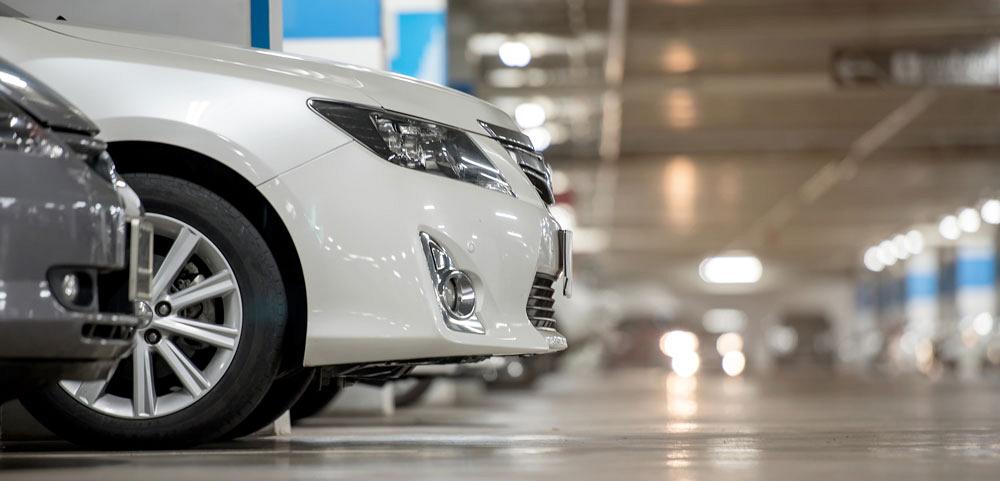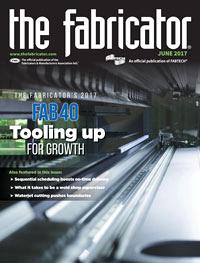Senior Editor
- FMA
- The Fabricator
- FABTECH
- Canadian Metalworking
Categories
- Additive Manufacturing
- Aluminum Welding
- Arc Welding
- Assembly and Joining
- Automation and Robotics
- Bending and Forming
- Consumables
- Cutting and Weld Prep
- Electric Vehicles
- En Español
- Finishing
- Hydroforming
- Laser Cutting
- Laser Welding
- Machining
- Manufacturing Software
- Materials Handling
- Metals/Materials
- Oxyfuel Cutting
- Plasma Cutting
- Power Tools
- Punching and Other Holemaking
- Roll Forming
- Safety
- Sawing
- Shearing
- Shop Management
- Testing and Measuring
- Tube and Pipe Fabrication
- Tube and Pipe Production
- Waterjet Cutting
Industry Directory
Webcasts
Podcasts
FAB 40
Advertise
Subscribe
Account Login
Search
Good marketing helps custom metal fabricators find the right spot
Parking and marketing have a “lot” in common (pun intended)
- By Tim Heston
- June 6, 2017
- Article
- Shop Management
At the 2017 FABRICATOR’s Leadership Summit, David Underwood began his presentation in a way you wouldn’t expect a marketing person to do. He talked about airport parking.
Underwood is president of TopSpot Internet Marketing, a firm that serves many small to medium-sized manufacturers, including custom fabricators. Instead of opining about search engine optimization, social media presence, or about what makes a good website, Underwood began with an experience he had in a parking garage at Houston’s Hobby Airport on his way to the March summit.
For previous trips, Underwood typically would arrive at the airport parking garage, see the “spaces available” sign lit up on a certain level, then drive around and around trying to find an open space. All too often he had to exit and drive to another level.
In March Underwood had an entirely different experience. When he pulled up, signs not only told him how many spaces were available in each aisle, but lights by each parking space showed him where that open space was. The garage now had sensors that detected whether a parking space was free or occupied. When the space was free, the light turned green; when a car pulled into the space, the light turned red.
That simple innovation changed Underwood’s experience entirely. He used this story to illustrate how good marketing is all about what he called the “user experience.” In the metaphorical sense, marketing material needs to have those lights pointing to the open space—the solution to the prospect’s problem.
Underwood’s parking story is a great metaphor for custom metal fabrication in general. Few think about either unless something goes awry, such as when a driver can’t find a parking spot, or a plant’s production gets behind because of a fabricator’s poor delivery or quality performance.
A quick disclaimer: What follows are my observations, not drawn specifically from Underwood’s talk. One chief observation: A fabricator’s customer has a lot of options, and that’s what makes effective marketing so critical. As a person who needs to catch a plane, Underwood (the parking garage’s “prospective customer”) has a lot of options too. Off-airport parking would be one, analogous to another fabricator with longer lead times and lower prices.
He also could have taken a taxi and eliminated the need for parking altogether. Similarly, a custom fabricator’s customer, such as an OEM, doesn’t need to outsource metal fabrication. After all, a fab shop needs to make money, so as with any sourcing, there are price markups. The OEM could purchase its own lasers and press brakes and hire welders. In-house fabrication would theoretically make parts at cost.
But “at cost” is often more than what a custom fab shop offers, even when ignoring overhead calculations and looking at it from a purely part-velocity perspective. Consider an OEM that brings all fabrication in-house. The main assembly plant doesn’t have room for the machinery, so the OEM puts its fabrication department in a plant about a mile down the road. It’s effectively a service center that sends fabricated products to the assembly plant.
After setting up the shop, managers at the OEM notice some trends emerge. Rework—which seems a little less painful and easy to hide, considering all fab work is now in-house—is on the rise. Sometimes the wrong job, or a job based on out-of-date revisions, lands on the assembly plant floor. Work process development, communication, safety compliance, training—all that and more costs money.
It’s analogous to someone taking a taxi that gets lost on the way to the airport. Sure, the taxi fare is cheaper than using long-term parking, but the driver makes you miss your flight.
If the OEM chose to outsource with a world-class supplier, parts could have arrived at the receiving dock and gone right into production. The price may have been higher, but the short order-to-ship cycle would have done wonders to the OEM’s cash flow and overall capacity.
Of course, now we have services like Uber. Simply look on your smartphone and you know exactly when you will be picked up and when you will arrive, all for less than a taxi fare. Following the parking garage metaphor, this is a little like an OEM that has integrated metal fabrication into its assembly in an effective way. The OEM no longer needs to park (source metal fabrication); it just calls an Uber (uses well-integrated in-house fabrication).
Consider Total Door Systems, a Michigan door manufacturer The FABRICATOR covered in February (and archived at thefabricator.com). Instead of having a separate fabrication department that sent batches of parts to the assembly line, Total Door has a punch press and press brake integrated directly into its single-piece-part-flow line that produces a variety of doors all engineered to order.
A custom fabricator may not be able to make life easier for a prospective customer in this situation, at least not on a regular basis. So the fabricator’s marketing targets another audience, one in which part complexity, mix, or other characteristics do not make in-house fabrication cost-effective.
The custom fab shop’s marketing efforts, including its website, search engine optimization, literature, and all the other tools, don’t just give a list of processes or machinery or make generic claims about its fantastic quality and delivery performance. Instead, search engine optimization draws the target customers to the website through specific keywords (for example, ones that incorporate specific dimensions and thickness requirements for a NEMA enclosure). Website content shows processes in action and illustrates how the shop responds quickly to customer demands.
Marketing then gets specific. A website link directs people to different content sections dedicated to specific markets, like aerospace, defense, or automotive. It reveals specific pain points for each market, including what makes life hard for a purchasing agent or manufacturing engineer at an OEM. And it covers specific ways in which the fabricator could ease that pain.
In short, marketing brings the prospect through an experience that leads to just the right parking space. In the best circumstance, the potential customer parks, gets out, and gives the fab shop a call.
The FABRICATOR’s Leadership Summit is part of the Fabricators & Manufacturers Annual Meeting. The next meeting occurs March 7-9, Scottsdale, Ariz. For more information, visit www.fmanet.org/annualmeeting.About the Author

Tim Heston
2135 Point Blvd
Elgin, IL 60123
815-381-1314
Tim Heston, The Fabricator's senior editor, has covered the metal fabrication industry since 1998, starting his career at the American Welding Society's Welding Journal. Since then he has covered the full range of metal fabrication processes, from stamping, bending, and cutting to grinding and polishing. He joined The Fabricator's staff in October 2007.
Related Companies
subscribe now

The Fabricator is North America's leading magazine for the metal forming and fabricating industry. The magazine delivers the news, technical articles, and case histories that enable fabricators to do their jobs more efficiently. The Fabricator has served the industry since 1970.
start your free subscription- Stay connected from anywhere

Easily access valuable industry resources now with full access to the digital edition of The Fabricator.

Easily access valuable industry resources now with full access to the digital edition of The Welder.

Easily access valuable industry resources now with full access to the digital edition of The Tube and Pipe Journal.
- Podcasting
- Podcast:
- The Fabricator Podcast
- Published:
- 04/16/2024
- Running Time:
- 63:29
In this episode of The Fabricator Podcast, Caleb Chamberlain, co-founder and CEO of OSH Cut, discusses his company’s...
- Industry Events
16th Annual Safety Conference
- April 30 - May 1, 2024
- Elgin,
Pipe and Tube Conference
- May 21 - 22, 2024
- Omaha, NE
World-Class Roll Forming Workshop
- June 5 - 6, 2024
- Louisville, KY
Advanced Laser Application Workshop
- June 25 - 27, 2024
- Novi, MI
































